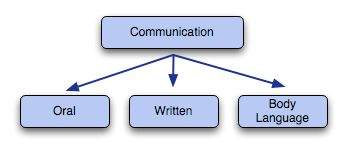Communication Methods
Communication Methods
Advertisements
Introduction
We all know the importance of communication in our daily lives. Nothing can take place without some method of communication being used to express ourselves for whatever purpose.Communication is even more valuable in a business environment as there are several parties involved. Various stakeholders, whether they are customers, employees or the media, are always sending important information to each other at all times.
We are therefore constantly using some form of communication or another to send a message across. Without these different methods of communication available today, it would take eons for us to carry out business as efficiently as it is done today and with the same speed.
Let's try and understand what these methods of communication are.
Types of Communication
Numerous new instruments have emerged over the years to help people communicate effectively.
Oral Communication
Oral communication could be said to be the most used form of communication. Whether it is to present some important data to your colleagues or lead a boardroom meeting, these skills are vital.We are constantly using words verbally to inform our subordinates of a decision, provide information, and so on. This is done either by phone or face-to-face.
The person on the receiving end would also need to exercise much caution to ensure that he/she clearly understands what is being said.
This shows therefore that you would need to cultivate both your listening and speaking skills, as you would have to carry out both roles in the workplace, with different people.
Written Communication
Writing is used when you have to provide detailed information such as figures and facts, even while giving a presentation.It is also generally used to send documents and other important material to stakeholders which could then be stored for later use as it can be referred to easily as it is recorded. Other important documents such as contracts, memos and minutes of meetings are also in written form for this purpose.
It can be seen in recent years, however, that verbal communication has been replaced to a great extent by a faster form of written communication and that is email.
You could also use video conferencing and multiple way phone calls with several individuals simultaneously. Apart from a few glitches that could occur, these methods of communication have helped organizations come a long way.
Body Language
Although the most common methods of communication are carried out orally or in writing, when it comes to management techniques, the power of non-verbal communication must never be underestimated.Your smile, your gestures and several other body movements send out a message to the people around you. You need to be mindful of this while dealing with your employees and customers.
Always remember to maintain eye contact. This would show that you are serious and confident about what is being said.
Why Do We Need Different Communication Methods?
You may ask why it is important that we use different methods of communication in one organization.The answer is very simple. The reason for this is the pivotal role that communication plays in the effective functioning of a business.
Imagine an organization today without e-mail facilities. How would a customer then be able to send an important proposal quickly and directly to the employer in-charge? Similarly, an organization may have to stall their work if certain managers are not in the country and are thereby unable to give a presentation to the board.
But, of course, this can be done today with the help of video conferencing.
Therefore, it is crucial that different methods of communication are employed.
Choosing the Right Method
It is important that the most cost-effective methods of communication are chosen for any organization. Simply choosing a method of communication due to it being a famous instrument is not going to help.You would need to understand the needs of your organization in particular. There are certain questions that you would need to ask:
- What is our target audience?
- How much are we willing to spend on such an instrument?
- Will it increase employee productivity in the long run?
- What kind of information do we send out most often?
Conclusion
In conclusion, it is important to always remember the importance of communication in an organization.The methods of communication you choose could in a sense make or break the management structure of your organization and could also affect your relationship with customers, if not chosen carefully.
It is vital therefore that you spend some time choosing the right methods to aid you in your management tasks.

Comments
Post a Comment